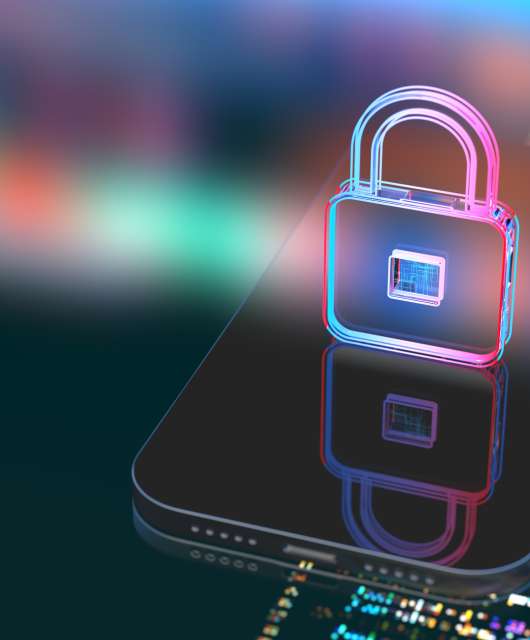Our smartphones are latched to us at all times and we constantly spend time online. From using applications to searching the web, we spend at least a few hours a day connected to the internet. But at what cost? While wifi becomes more and more accessible, using data is still the go-to for many people on the go.
While some data plans are unlimited, many are restricted to 3-20 GB of data. When it comes to saving data, there are a few things to take into account. We’ll show you which apps are killing your data plan, how much data you really need and tips to keep your data usage down.

Tips to Reduce Data Usage
While cutting down data on popular apps like Instagram and Facebook can stretch your data plan, there are additional tips you can follow to reduce data on your mobile device.
1. Disable background app refresh
Apps are constantly running in the background even when you aren’t using them. They perform activities like automatically downloading updates and syncing information. Automatic app refreshing uses up a lot of data and is less than necessary for your apps to function properly. This is why it is a keen idea to disable the feature.
How can you disable background app refresh? On Android phones, head to Settings > Data Usage to view statistics on your apps’ data consumption. If any one app is using too much data for your liking, click the app and turn on the “Restrict app background data” toggle switch. This will stop all background activity.
On iPhones, this feature is under Settings > General > Background App Refresh. Once here, you can turn off background activity for certain or all apps. You can even choose for apps to only update while connected to WiFi. If you ever change your mind, just untoggle these settings in the same places.
2. Avoid desktop versions of sites on mobile devices
When browsing on your mobile web browser, stick to mobile versions of the website. Mobile sites are optimized best for smaller screen sizes. They will not be bogged down by large files, clunky videos, or incompatible Flash features. Manually switching to the desktop version of the site may seem more familiar at first, but doing so will cause your phone to use extra data to load the full site.
3. Use wifi when possible
When your phone is not using WiFi, it will opt to use cellular data. You can check if your phone is connected to WiFi by looking for the WiFi symbol of three curved lines at the top of your phone screen. If you do not see that symbol, you can check under your phone’s Settings for what WiFi networks are available nearby.
To avoid using data while out and about, take the time to connect your phone to your favorite spots’ WiFi. Next time you visit, your phone will remember the network and automatically connect. Always be sure to check your phone’s WiFi Searching is enabled in Settings or in the Control Panel (the screen that appears when you swipe up).
Forgetting to turn on WiFi is one of the easiest ways to use up too much data, but most places nowadays have free WiFi. Just be sure that you are connecting to a secure, legitimate WiFi, and ask cafes or stores to verify the SSID number to avoid false WiFi networks attempting to hack your device.
4. Set data alerts to check on cellular usage
Your phone and cellular service can provide you with updates on your data usage. It’s a good idea to set up these alerts so you know when you have used too much data and need to start conserving.
To turn on data alerts on Android, go to Settings > Network & Internet > Data Usage > Mobile Data Usage. Once there, tap the “Set data warning” switch on to be blue.
This process is slightly different for Samsung Galaxy users. Within Settings, tap Connections > Data Usage > Billing Cycle and Data Warning. Turn on the “Data limit” switch. Now you will receive updates when your data is nearly used up and when it is fully gone.
iPhones unfortunately do not come with a built-in alert system like this. However, users can check their data usage under Settings > Cellular and manually keep track of their data usage month to month. Another way to track your data is by downloading your cellular provider’s app to set up data usage alerts. These apps are usually free and will send you updates when you have reached set increments of your monthly data.
Now that you are an expert on how to save data, take a few minutes to update your settings and reflect on what apps you can cut down on. Remember to use safe, private wifi when you can, and to toggle off cellular data for apps that are rarely used. These tips can save you money on your cellular bill and battery life for your devices.
Sources:
Ting | Confused | Tech Walla | Lifehacker | CNET | Digital Trends | Whistle Out | Time | Apple | iMore |








6 comments
It’s a shame you don’t have a donate button! I’d certainly donate to this outstanding blog!
I suppose for now i’ll settle for bookmarking and adding your RSS feed to my Google account.
I look forward to new updates and will talk about this blog with my
Facebook group. Chat soon!
After exploring a handful of the articles on your web page, I
truly like your way of writing a blog. I saved as a favorite it to my bookmark website list and will
be checking back in the near future. Take a look at
my web site as well and tell me how you feel.
Wonderful, what a blog it is! This website gives helpful data to
us, keep it up.
Thanks a lot for reading us!
We are glad to know you find our content useful.
Kind regards,
Panda Security.
I appreciate your efforts in writing such a detailed post on Tips to Reduce Data Usage. It’s very useful for me. Thank you keep sharing!
Thanks for this.
It was alarming how I was using up data on my new 4G phone.